Intro to sutures
1/30
There's no tags or description
Looks like no tags are added yet.
Name | Mastery | Learn | Test | Matching | Spaced |
|---|
No study sessions yet.
31 Terms
What is the purpose of a needle holder in suturing?
Used to place the needle and allow for precise maneuvering during suturing.
What are surgical forceps used for during suturing?
Used to grasp tissue and provide stability during the suturing process.
Why are scissors important in the suturing process?
Used to cut the suture material to the desired length and to trim tissue if necessary.
What is a surgical needle designed for?
Specifically designed for stitching together soft tissue and comes in various shapes and sizes for different procedures.
What are interrupted sutures?
Individual sutures placed separately, allowing for greater control and adjustment during closure.
When are continuous sutures typically used?
Provides a quicker closure method, commonly used in long wounds or areas where speed is essential.
Describe the mattress suture technique.
Involves taking bites through the tissue at an angle to create tension and better alignment of wound edges.
What is the purpose of subcuticular sutures?
Placed just beneath the skin surface to minimize scarring, commonly used in cosmetic surgery.
What are basic suturing principles emphasized by Michael Zen?
Mastery of suturing requires consistent practice and modern simulators provide a cost-effective training solution.
What is the main characteristic of a simple buried suture?
Designed to hide the knot beneath the skin, reducing tension at the surface.
What is the approach used in a vertical mattress suture?
Far-far and near-near technique, good for wounds needing additional tension.
How does the running locking suture differ from a regular running suture?
Locks each stitch as it's tied, valuable for larger wounds that gape open.
What is the final step in basic knot tying during suturing?
Finalize with a single wrap to secure the knot.
What is the advantage of using skin stapling for closures?
It's fast and effective for proper skin approximation.
How are staples typically removed after a wound closure?
Using a staple remover for painless extraction.

What kind of suture is this?
Simple

Type of suture
Simple buried Suture
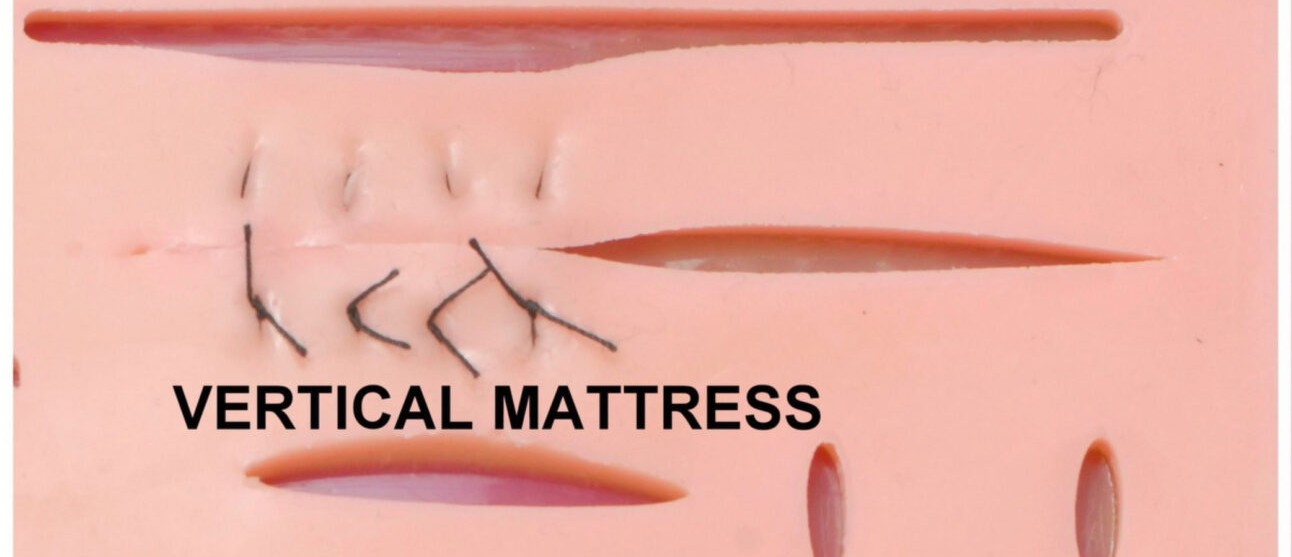
Vertical Mattress

Horizontal Mattress
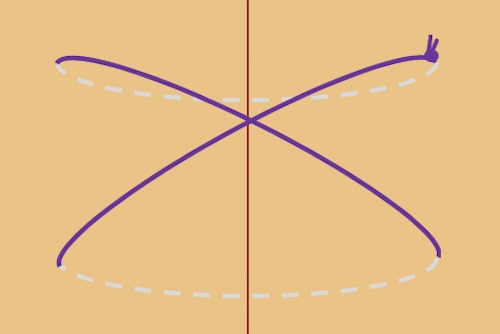
Figure 8
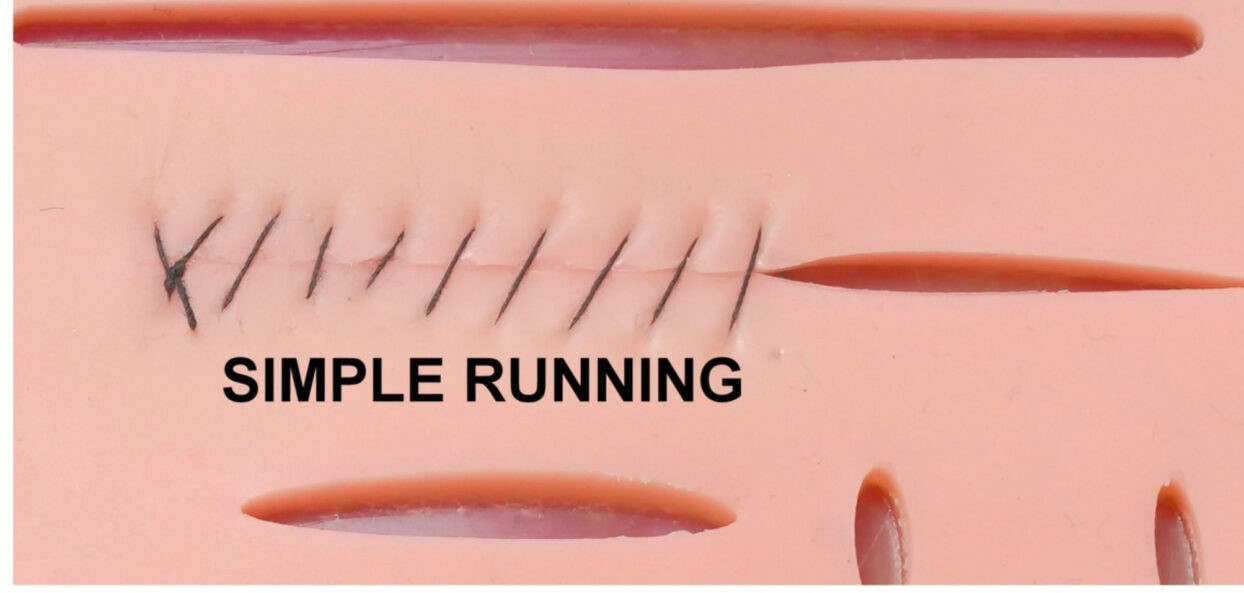
Single running Suture
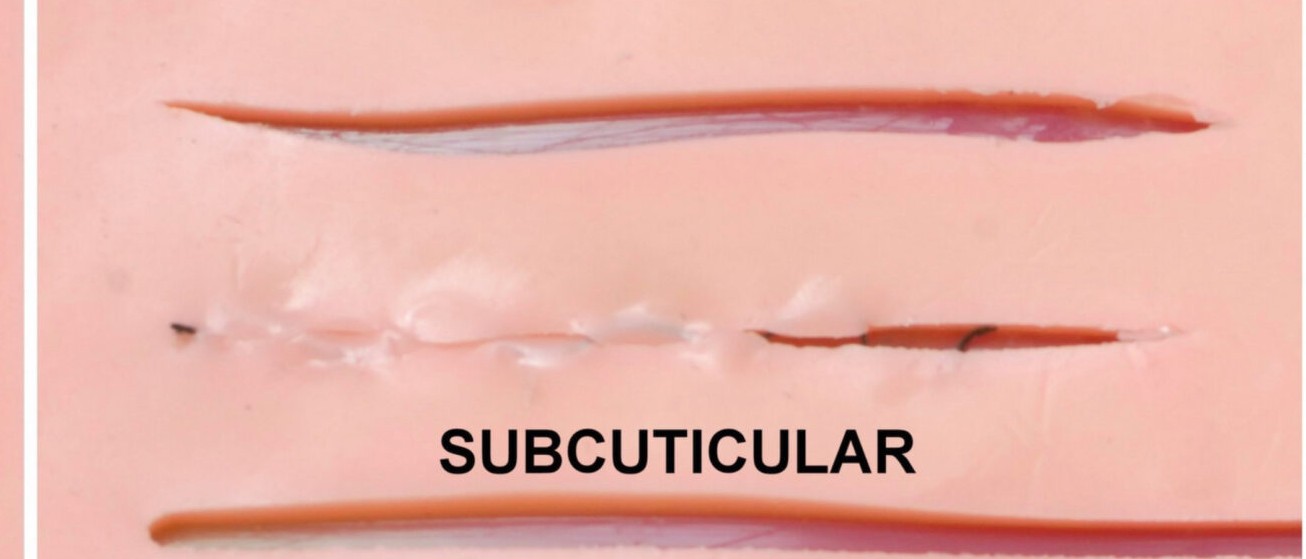
Subcuticular suture
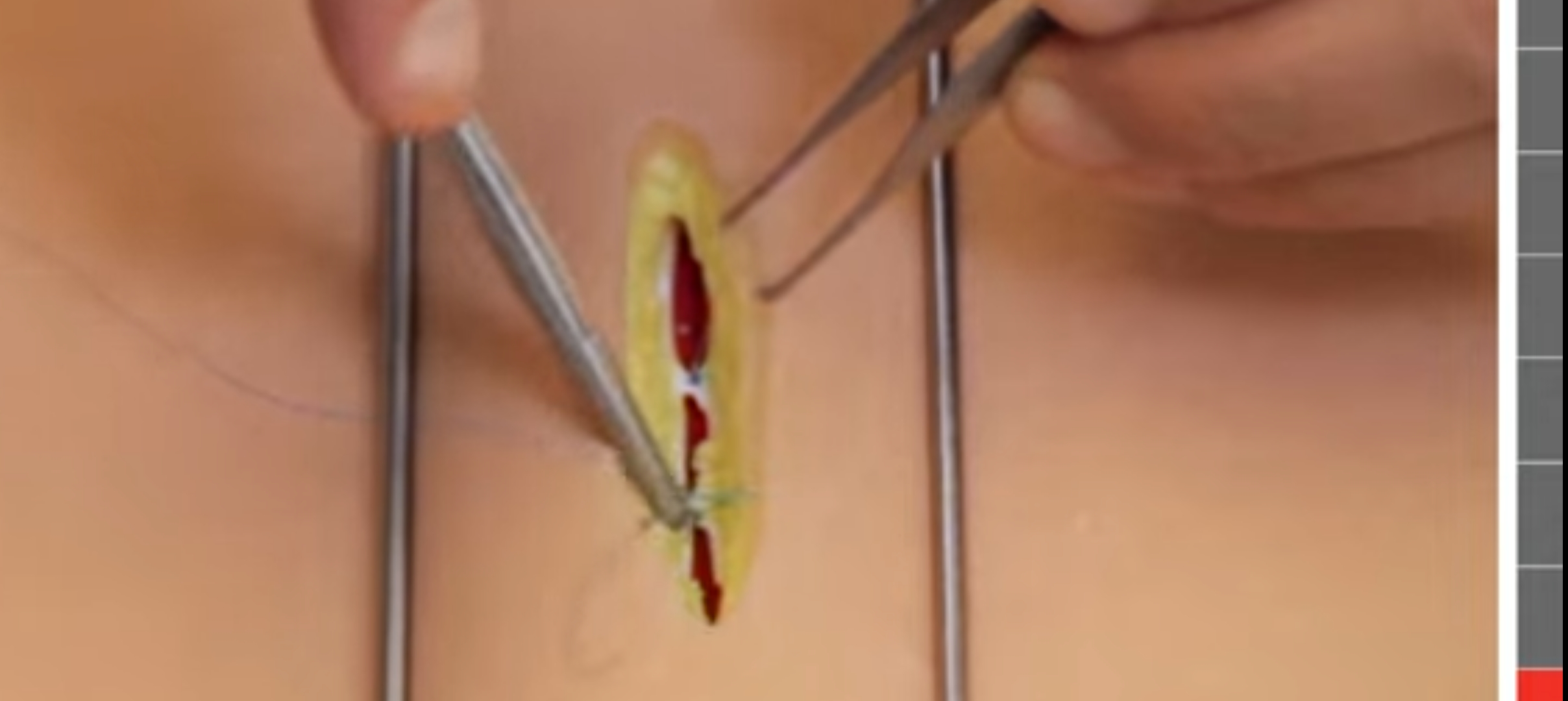
Complex deep wound closure
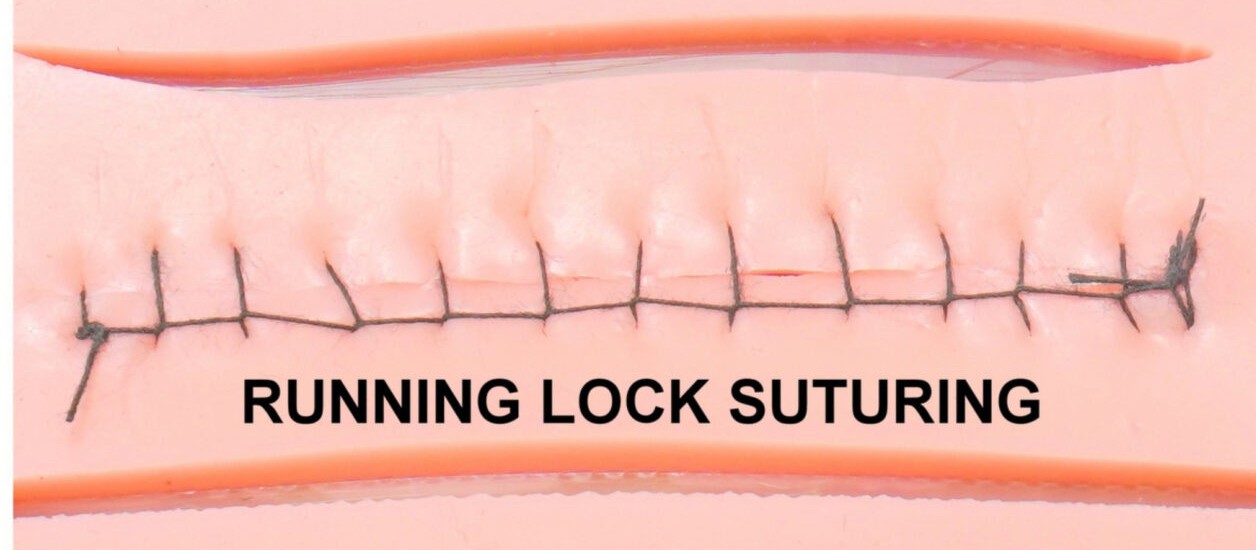
Running locking
Why would you use a vertical mattress suture?
Traumatic wounds
One advantage of the horizontal mattress suture is
it is faster than two simple sutures
In cosmetic surgery and hair bearing areas, it is better to use
horizontal mattress
Why would you use a figure weight as opposed to a horizontal mattress?
it is faster
Simple running locking suture is best for
a wound that is bleeding profusely
Why would you use a subcuticular closure?
for cosmetic purposes
Complex deep wound closure is best for wounds that go through the fascia and the muscle. If not used, what could potentially happen?
Fluid could build up beneath the closure and the skin will pull apart.